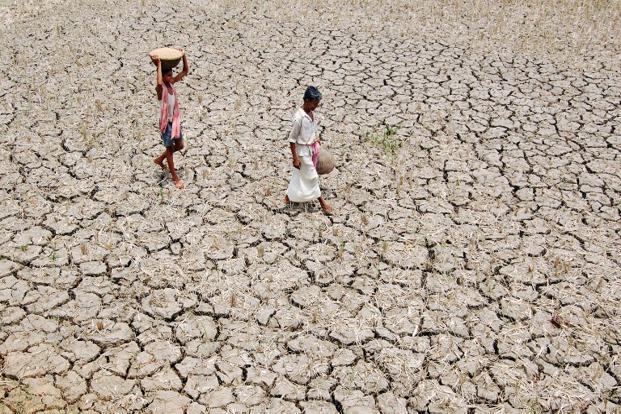
Early signs of hot, dry weather caused by El Nino are threatening food producers across Asia, while American growers are counting on heavier summer rains from the weather phenomenon to alleviate the impact of severe drought.
Soil is drying in Pakistan and India, which is expected to hamper summer crop planting, while El Nino is also forecast to blunt the impact of South Asia’s crucial June-September monsoon season.
"We are looking at longer term dryness in Australia from now until at least August," said Chris Hyde, a meteorologist at US-based Maxar. "The seasonal outlook in India is a weaker than normal monsoon for the entire country, extending into Pakistan."
El Nino, a warming of water surface temperatures in the eastern and central Pacific Ocean, is expected to develop in the coming months, according to meteorologists. The impact of the phenomenon typically causes hot, dry weather across Asia and Australia while bringing heavier-than-normal rainfall to the southern US and southern South America.
As El Nino looms, wheat output in Australia, the world’s second-largest exporter of the grain, is expected to take a hit from dry weather, while palm oil and rice production is likely to suffer in Indonesia, Malaysia and Thailand, forecasters and analysts said.
Read more: Isn't climate change a matter of national security?
Lower production of cereals and oilseeds in Asia because of El Nino is likely to heighten food inflation worries for some of the world's most vulnerable consumers, dashing hopes for further relief from lower prices in recent months.
Even if the weather pattern ends up boosting crop output in the Americas, the impact in Asia could reverberate across global food markets. Wheat prices dropped to two-and-half year lows this week, while corn and soybeans have eased from multi-year peaks set in 2022, when the Russia-Ukraine war and Covid disrupted world supplies.
Meanwhile, the Pakistan Meteorological Department has released its outlook for June, July and August, indicating below-normal rainfall across most parts of the country.
According to the outlook, certain areas in the northern regions may experience slightly higher rainfall than usual during the monsoon season this year. However, in the western parts, including coastal areas of Balochistan, rainfall is expected to be within normal levels.
Towards the end of the monsoon season, an increase in rainfall can be observed in Upper Khyber-Pakhtunkhwa (K-P), Gilgit-Baltistan (G-B) and Balochistan. The rise in temperature may accelerate the snow melting process in the mountains of K-P, G-B and Azad Jammu and Kashmir. Consequently, this rapid snowmelt could lead to excessive water flow in rivers.
With low rainfall and elevated temperatures prevailing during this season, drought-like conditions are anticipated. Soil moisture levels are expected to gradually decrease, posing challenges for agriculture. The southern part of the country may require additional irrigation for the kharif crops and vegetables to sustain growth.
These forecasts raise concerns about the availability of water, agricultural productivity, and overall environmental conditions in the affected regions. Farmers and policymakers will need to take appropriate measures to mitigate the potential impact of reduced rainfall, such as implementing efficient irrigation practices and exploring alternative water sources. Reuters
With additional input from our correspondent in Karachi





1737501233-0/mlk-(1)1737501233-0-165x106.webp)



1732012115-0/Untitled-design-(14)1732012115-0-270x192.webp)



1737452260-0/Gaddafi-stadium-(2)1737452260-0-270x192.webp)










COMMENTS
Comments are moderated and generally will be posted if they are on-topic and not abusive.
For more information, please see our Comments FAQ